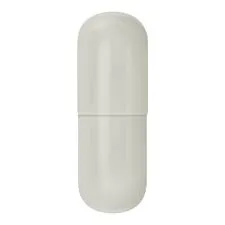
Oct . 07, 2024 02:34 Back to list
hydroxypropyl methyl cellulose hpmc
Understanding Hydroxypropyl Methylcellulose (HPMC) Properties and Applications
Hydroxypropyl Methylcellulose (HPMC) is a non-ionic, cellulose-based polymer that has gained significant recognition in various industries due to its unique properties and versatility. As a derivative of cellulose, HPMC is synthesized by reacting alkali with cellulose, followed by etherification with propylene oxide and methyl chloride. This process results in a compound that is soluble in water and exhibits distinct characteristics that make it ideal for a plethora of applications.
One of the most prominent features of HPMC is its ability to form gels and thickening agents when mixed with water. This property makes it an excellent choice in the food industry, where it is commonly used as a food additive. As a thickening agent, HPMC improves the texture and stability of various products including sauces, dressings, and ice creams. Furthermore, since it is derived from plant cellulose, it is considered a safe and preferable alternative to synthetic thickeners.
Understanding Hydroxypropyl Methylcellulose (HPMC) Properties and Applications
Moreover, HPMC is extensively utilized in the construction industry, particularly in the formulation of cement-based products such as tile adhesives, grouts, and mortars. Its water-retaining properties prevent the rapid drying of mixtures, allowing for improved workability and extended open time. This is particularly beneficial in construction projects where environmental conditions may lead to premature drying of adhesives, compromising their effectiveness.
hydroxypropyl methyl cellulose hpmc

Another significant application of HPMC lies in the cosmetic industry, where it serves as a thickener, emulsifier, and stabilizer in various formulations. Its gentle nature makes it suitable for use in skin and hair care products, where it helps maintain the desired viscosity and enhances the sensory feel of cosmetics. Additionally, HPMC is often found in personal care products, ensuring that ingredients remain well-distributed and stable over time.
In the realm of 3D printing, HPMC has emerged as a vital component in filament compositions. Its excellent adhesion properties and ability to create a smooth finish make it ideal for use in the production of complex structures. As the 3D printing industry continues to evolve, the demand for HPMC-based materials is expected to grow, paving the way for innovative applications.
Despite its numerous benefits, handling HPMC requires careful consideration. Although it is generally recognized as safe, the concentration used in formulations must be managed appropriately to avoid potential adverse effects. Proper formulation practices are essential to ensure that the desired characteristics of HPMC are achieved without compromising the quality of the final product.
In conclusion, Hydroxypropyl Methylcellulose (HPMC) is a versatile polymer that has found its way into various industries due to its exceptional properties. From food additives to pharmaceutical formulations, construction materials, and cosmetics, HPMC plays a vital role in enhancing the quality, performance, and stability of products. As research and development in material science progress, the potential applications of HPMC are likely to expand, indicating a promising future for this invaluable polymer. With its emphasis on safety and effectiveness, HPMC continues to stand out as a remarkable ingredient that bridges the gap between functionality and sustainability in modern formulations.
-
Versatile Hpmc Uses in Different Industries
NewsJun.19,2025
-
Redispersible Powder's Role in Enhancing Durability of Construction Products
NewsJun.19,2025
-
Hydroxyethyl Cellulose Applications Driving Green Industrial Processes
NewsJun.19,2025
-
Exploring Different Redispersible Polymer Powder
NewsJun.19,2025
-
Choosing the Right Mortar Bonding Agent
NewsJun.19,2025
-
Applications and Significance of China Hpmc in Modern Industries
NewsJun.19,2025







